community engagement strategy

2022-2025
Acknowledgement of Country
We acknowledge the traditional custodians of the land on which we work and live, the Gathang-speaking people and pay our respects to all Aboriginal and Torres Strait Islander people who now reside in the MidCoast Council area. We extend our respect to elders past and present, and to all future cultural-knowledge holders.
Vision
MidCoast is a place of unique environmental and cultural significance. Our strong community connection, coupled with our innovative development and growing economy, builds the quality of life we value.

Mission
We deliver benefits for our community in a way that adds value and builds trust.
2 MidCoast Council — Community Engagement Strategy
Contents
Introduction 5
Aiming to meet community needs and aspirations 6
Understanding our community and our region 8
What our community has told us 11
Our purpose 14
Our principles 14 Our approach 15 Planning our engagement 16
Why we engage 18 Who do we engage with? 18
The level of engagement 21
Scale of engagement 22 Scope of engagement 22
Engagement activities 23
Mandatory public exhibition 27
Our responsibilities 29 How we will drive improvement 30
Measurement and reporting 33
Appendix 34
This Community Engagement Strategy has been developed in keeping with the requirements of Section 402 of the Local Government Act 1993 and the Environmental Planning and Assessment Act 1979.
3 MidCoast Council — Community Engagement Strategy

4 MidCoast Council — Community Engagement Strategy
introduction
We are committed to engaging with our community in a meaningful way to make sure our community is at the heart of all we do.
We recognise strong and effective communication and engagement with our community can deliver a range of benefits, including strengthening relationships, generating support and improving community awareness of and participation in our programs, projects, activities and services.
We communicate with our community not just to inform them, but to support the building of community capacity by increasing our community’s knowledge on the themes and issues affecting them in their daily lives.
We also want our community to know we are here for them, we are making decisions and putting in place plans that impact on the future of our community and we take this seriously.
This strategy is our commitment to our community on how we will engage with them and how and when they can participate in decision-making.
It also aims to provide transparency and clarity for all stakeholders so they can understand their role in the decision-making process.
We want the way we communicate and engage with our community to be inclusive for all our community and strive to do this in an accessible, transparent and consistent way.
This document provides a framework to support the development of our peak strategies, including our Community Strategic Plan.
It incorporates objectives, actions and guidelines to ensure continual improvement of our practices.
It has been informed by our community as we strive to communicate and engage in ways that best suit the various communities that call the MidCoast home.
5
Strategy
MidCoast Council — Community Engagement
Aiming to meet community needs and aspirations
When we communicate and engage with our community, we are doing so within a strategic planning framework that governs how we as a Council plan and deliver the services we provide to our communities.
This framework is called the Integrated Planning and Reporting Framework which is established by the Office of Local Government. It guides all Councils in NSW to develop robust plans for delivering services and projects, by ensuring we have the plans, budgets and resources in place to deliver.
It also helps to make sure the day-to-day activities we do work towards our community’s long-term aims and aspirations.
The Community Engagement Strategy is an important part of this framework, illustrated below, to communities that call the MidCoast home.
ONGOING MONITORING & REVIEW
Council Strategies and plans
Disability Inclusion Action Plan
Strategic Planning Statement
Water Cycle Management Strategy Environmental Plans
Strategy
Term Financial Plan
Management Strategy
Management Strategy and Plans
Strategies
Regional Plans and Priorities
of Strategic Regional Priorities Community Engagement Strategy and Community Participation Plan Delivery Program 4 years Operational Plan 1 year Annual Report Community Strategic Plan 10+ years 6 MidCoast Council — Community Engagement Strategy
Other
Examples:
Local
Integrated
Resourcing
Long
Workforce
Asset
State Plans and
Relevant
ONGOING MONITORING & REVIEW Statement

7
MidCoast Council — Community Engagement Strategy
Understanding our community and our region
With more than 96,000 people calling the MidCoast home – and forecasts of a population of 113,000 by 2036 – we recognise that there is no one-size fits all approach and we need to be continually evolving and developing the ways we engage with our community.
Our estimated population, according to the ABS 2021 is 96,425, with forecasts of 113,147 by 2036.
People typically move here from Blacktown, Parramatta, the Central Coast and Northern Beaches Council areas.
Younger people move from the MidCoast to Newcastle and South-East Queensland.
Snapshot
• 20.1 per cent are seniors (70 to 84)
• 17.9 per cent of the population are empty nesters and retirees (60 to 69)
• 14 per cent are parents and homebuilders (35 to 49)
• 13.2 per cent are older workers and pre-retirees (50 to 59)
• 7.9 per cent are young workforce (25 to 34)
• 7.1 per cent are primary schoolers (5 to 11)
• 6.5 per cent are secondary schoolers (12 to 17)
• 5.3 per cent are in tertiary education and independent (18 to 24)
• 4.0 per cent are babies and preschools (0-4)
• 4.0 per cent are elderly (85 and over)
Within these groups we are mindful that:
• 9 per cent of our population report needing help in their day-to-day lives due to a severe or profound disability
• Our social economic status index (SEIFA) score is 928 (2021 statistics are not yet available), lower than that of adjoining local government areas which have indexes around 980
• Aboriginal and Torres Strait Islander people make up 7.3 per cent of our population, more than double the State and Australian averages.
8 MidCoast Council — Community Engagement Strategy
If we are to effectively engage with our community we need to have a clear picture of who we are and the region we live in.
50,425 Dwellings (nieir) 17 Listed threatened ecological communities 192KM of coastline 13 Major water catchments 96,425 population (abserp 2021) 3,599KM roads 1,845km of sealed roads 1,754km of unsealed roads 657 bridges 10,052km2 58 Full size playing fields 3,000HA of parks and open space managed 1 World heritage listed areaGondwanan rainforests (Barrington Tops) 14 heritage conservation areas 487 heritage items 35% of nsw seagrass wallis lake 45 Water reservoirs 200m drop ellenborough falls 26 sporting complexes 84 playgrounds 1 Marine Parks Port Stephens Great Lakes 1 Internationally recognised wetland - Myall Lakes 2 Ocean pools 10 chlorinated pools over 750HA of mowing 13 skate parks 1 Regional Airport 261km manning river The only double delta river in the southern hemisphere 30 cemetries 5 Wetlands of national significance Crowdy Bay National Park Wallis Lake and adjacent estuarine islands. Myall Lakes. Port Stephens and Barrington Tops swamps 2 Award winning remediated wetlands Darawak (900HA) & Cattai (1,500HA) 58 National Parks 195 towns villages & localities 9 MidCoast Council — Community Engagement Strategy
council services and activities needing improvement 1. Maintaining local roads 2. Decision-making reflecting community opinion 3. Overall condition of sealed road network 4. Opportunity to participate in council decision-making 5. Engaging the community in planning most important council services and activities Maintaining local roads Supporting local jobs and businesses Emergency management Maintaining local bridges Water quality top 3 most valued aspects of living in the midcoast Lifestyle Natural environment Location 96% quality of life good or excellent high importance governance leadership and communication impacted by: provision of information and opportunity to participate in decision-making Community Satisfaction Survery Results 10 MidCoast Council — Community Engagement Strategy
What our community has told us
We regularly ask our community what is important to them through our community satisfaction survey. We have also specifically investigated how they want us to communicate with them and how they wish to share their thoughts with us.
We also know through the conversations we have with our community they expect we:
• will keep them informed in a timely manner
• are transparent in our decision-making
• provide opportunities for two-way communication
• provide opportunities for them to participate in decision-making in a meaningful way
• make decisions informed by community feedback
• inform and involve them in ways that are accessible to all
• keep them informed by using the channels and spaces they use.
11
Engagement Strategy
MidCoast Council — Community
Consultation outcomes – what the community told us
To support the development of this strategy, we undertook a number of surveys and activities to gain feedback from the community on how they want to hear from us and how they want to share their thoughts with us.
This included randomised phone surveys, surveys of attendees at our Community Conversations sessions and online and hard copy surveys available for the general community. We also conducted 12 pop-ups across the region.
What we learned when talking to the community:
People value direct communication, through brochures, emails or mail
People will generally only provide feedback if it’s on something they are personally interested in People usually only seek out information when they hear about something that may impact them
Community newsletters are really valued in parts of our region
On average people look for Council information once a month
It’s important to communicate and engage with our community in a range of different ways
Digital isn’t an option for some parts of our region
We need to be better at closing the loop - letting people know how their feedback influenced decisions
12 MidCoast Council — Community Engagement Strategy
34% want to phone us to share their thoughts 46% Want to hear from us via email 39% like attending meetings 58% Want to share their thoughts with us via online survey 543 completed the survey 28% like receiving letters in their letterbox 60% of social media users don’t follow council our community are most interested Roadwork updates Activities and events New/upgraded services Project progress updates 54% Tell us what they think by sending email or letter 27% Visit our website for information 13 MidCoast Council — Community Engagement Strategy
Our purpose
We aim to build knowledge of our decisions, services, facilities, events and activities by ensuring our community has access to clear, timely and transparent information. We create opportunities for involvement in decision-making and help our community understand what we are doing and why.
our Principles
When communicating and engaging with our community we apply our key principles of:
Connection: We act in ways that build strong relationships and trust while providing meaningful opportunities for participation in decision-making.
Accessibility: We provide information across multiple channels and undertake a range of activities to invite participation and feedback from all sections of our community in ways that are inclusive and accessible.
Timeliness: We communicate, consult and engage with our community with enough time for input and feedback to be able to be genuinely considered.
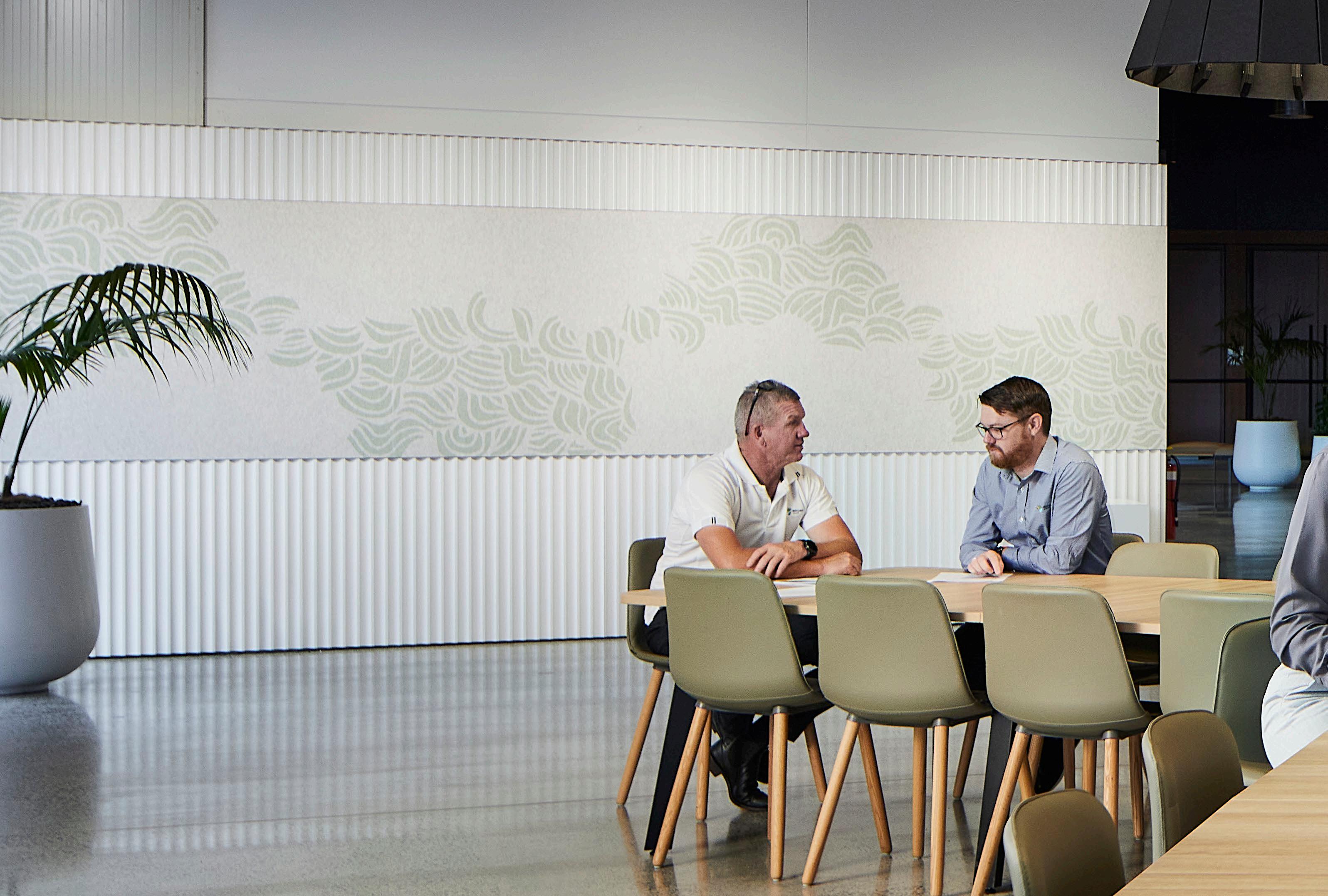
Clarity: We provide information that is relevant and of interest to the community. We are clear on how the community can be involved in decision-making and how their input has contributed.
Transparency: We explain our decisions to our community and let them know how their input has been considered. The feedback received and reports on engagement outcomes are available for the community to view.
14 MidCoast Council — Community Engagement Strategy
Our approach
We are committed to engaging with our community to increase understanding of issues that impact them, build positive relationships and consider the community’s views in our decision-making. The way in which we do this is underpinned by the International Association for Public Participation spectrum and the principles outlined in this document.
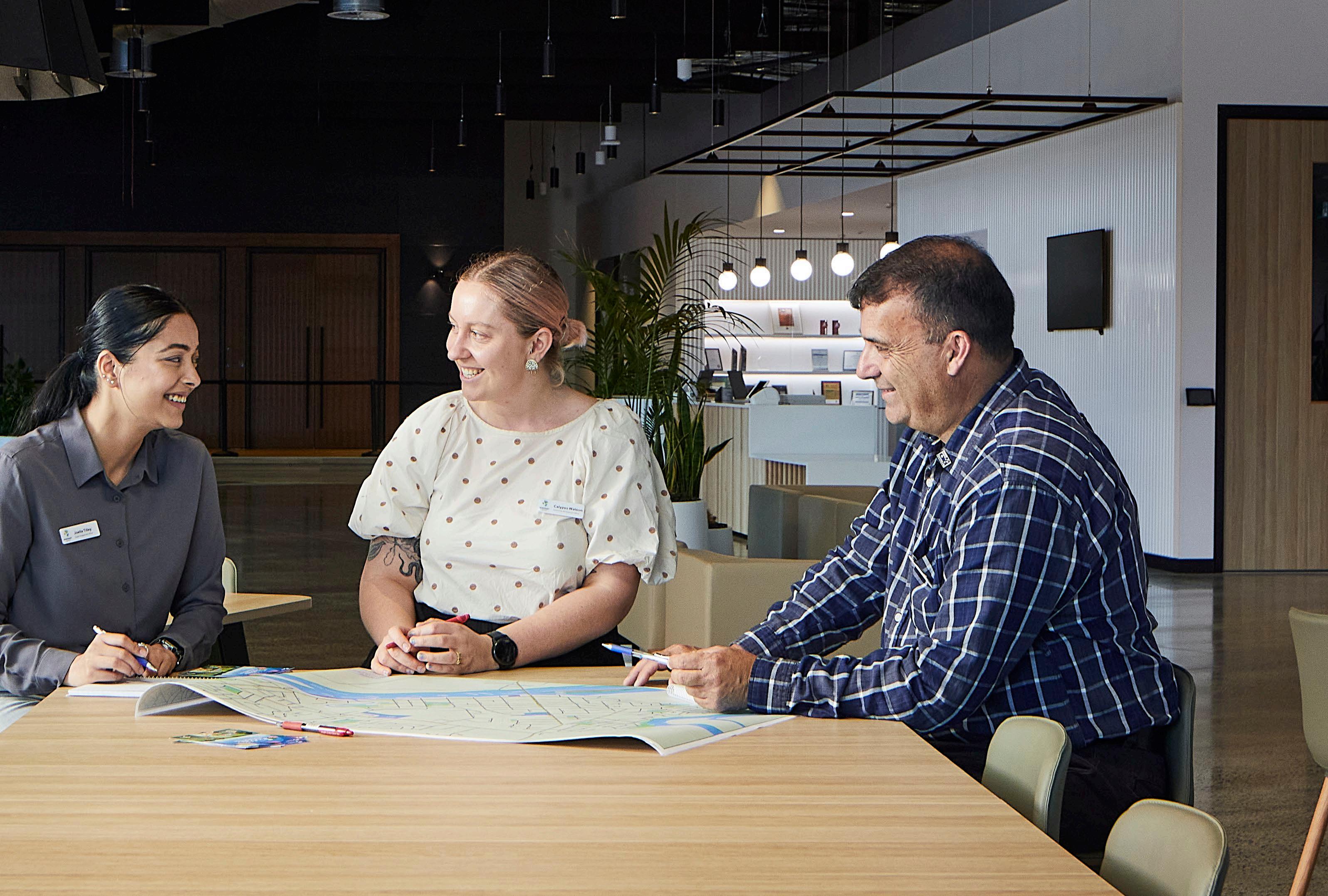
Decision-making
Understanding the views and aspirations of our community is an important element in our decision-making, at all levels. We consult and engage to gain this understanding. However, there are a range of other elements that need to be considered in our decision-making. These include:
• social, environmental and economic impacts
• the funding available
• any relevant legislation
• technical and professional advice
• Council governance, policies and resolutions.
There are also times when the community may not be involved in decision-making. This can include during emergency situations, when the elected Council resolve on a direction, when we are legislated to deliver a service or outcome or when there is only one technical solution available.
15 MidCoast Council — Community Engagement Strategy
Planning our engagement
This strategy guides the way we plan and undertake engagement with our community. This planning takes into consideration a range of factors including who the project will impact, the scale of the impact and how interested the community might be in the project.
We also consider the requirements for community participation under legislation, including minimum and maximum public exhibition timeframes to ensure the community can have a say.
Our engagement is usually linked to the plans, strategies and work outlined in our Integrated Planning and Reporting Framework, including our Community Strategic Plan.
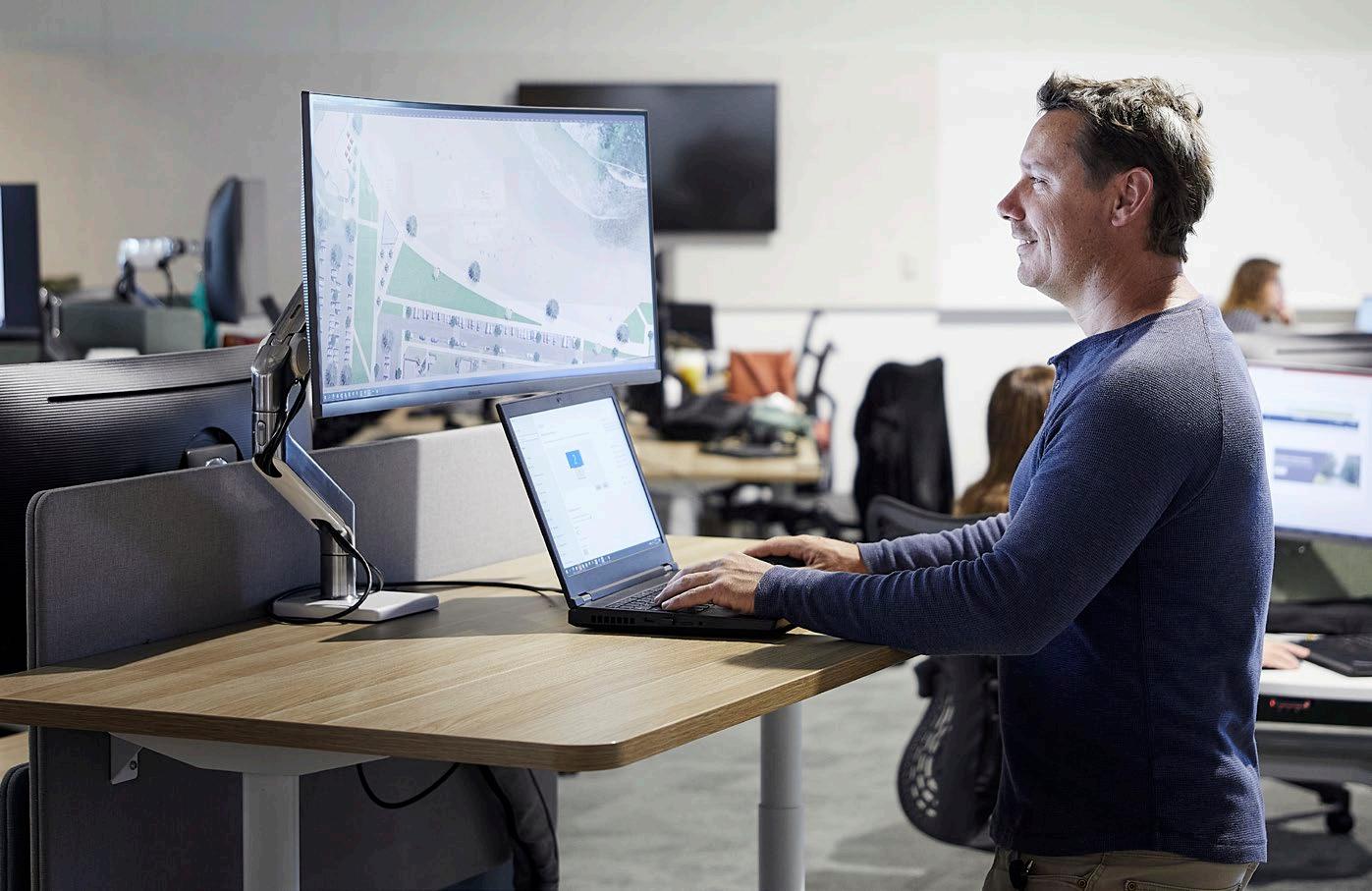
We will also engage with our community when we are:
• proposing a change to a Council activity or strategic direction that may significantly impact on the community
• developing new or reviewing existing policies, strategies or plans
• changing a service we provide to the community – introducing a new service, discontinuing a service, changing or reviewing a service
• proposing a change to the way a public space looks, is used or enjoyed
• wanting to gain community opinion on an issue where there are potentially competing views and a decision is required
• planning and developing major projects
• considering urban development or redevelopment proposals
• when required by legislation.
In planning our approach, we consider the following aspects: why we are engaging, who we engage with, the level, scale and scope of engagement and how we will connect with our communities.
16 MidCoast Council — Community Engagement Strategy

17
Strategy
MidCoast Council — Community Engagement
Why we engage
Engaging with our community in a meaningful and genuine way ensures we are transparent and informed in its decision-making.
For the community, participation in engagement can create a sense of belonging, connection and involvement, leading to greater ownership of decisions. In deciding when to engage with the community we consider the following:
• what opportunity does the community have to influence an outcome?
• will our decision-making be improved or better informed with input?
• does the outcome of what we are doing have significant impact?
• is there likely to be community opinion, concern or interest in the issue?
• is there a wide range of alternatives and views?
• can it assist to educate the community on an issue or topic?
• does our community have an expectation they will be engaged?
• does it provide an opportunity to develop or improve relationships with stakeholders?
Who do we engage with?
It is important we identify and understand who will be impacted by or have an interest in a decision, activity or service of Council, and consider this in planning our communication and engagement activities. Our stakeholders include:
• people who live in the MidCoast
• businesses and industries
• community, sporting, cultural, volunteer and environmental groups
• council reference groups and committees
• schools and educational services
• health and wellbeing services
• local Aboriginal land councils, elders and other representative bodies
• neighbouring councils and regional bodies
• government agencies such as Department of Planning, Industry and Environment, Transport for NSW etc
• local members (State and Federal)
• visitors to the MidCoast
• local media
• our employees.
18 MidCoast Council — Community Engagement Strategy
Inclusive participation
We have also identified some specific groups that may need additional considerations.
COMMUNITY SECTOR CONSIDERATIONS
Older people
Aboriginal people
People with a disability and carers
Working families
Culturally diverse
Use large print, choose accessible venues, hearing loops where available, daytime consultation opportunities
Connect with respected elders, use existing relationships, consider appropriate venues, culturally appropriate design, cultural training for engagement facilitators
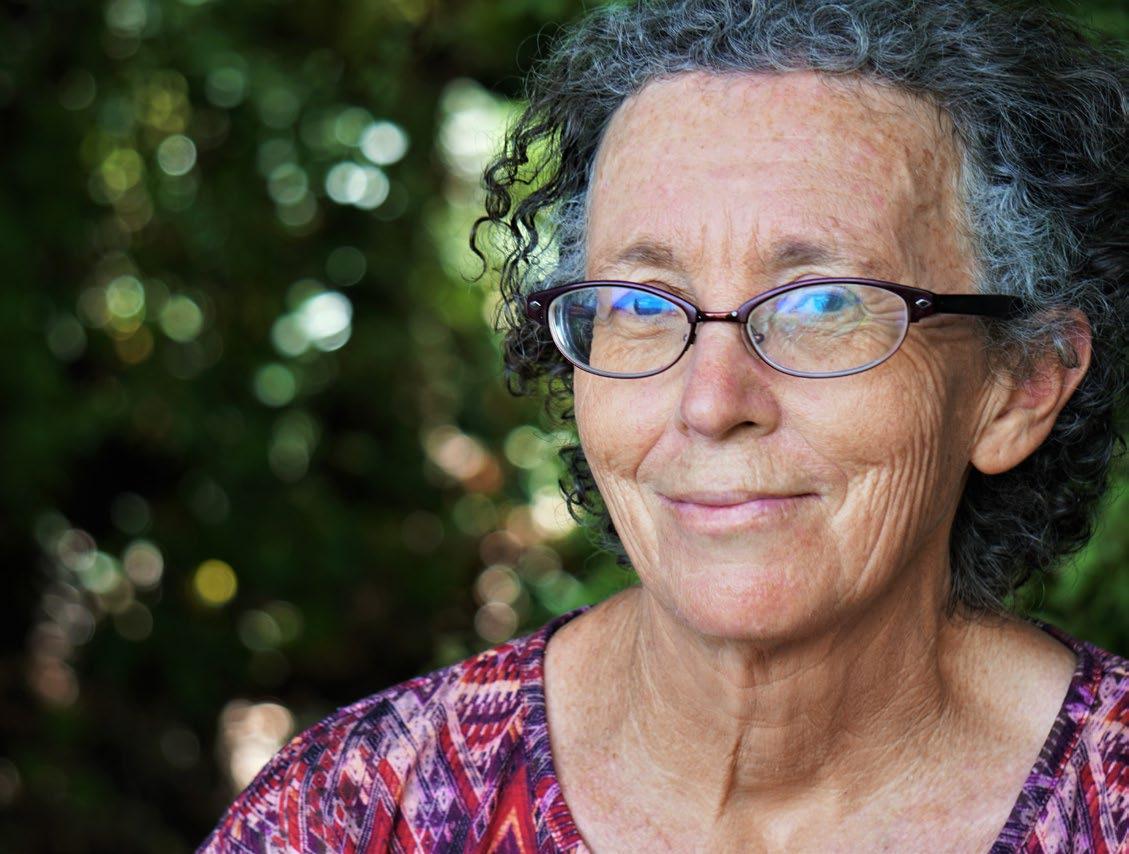

Accessible venues, avoid long periods of time, encourage support person, ensure adequate lighting, be mindful of background noise, consider complexity of engagement method for the audience, hearing loops where available
Timing, childcare needs, venue options appropriate for children
Respect cultural differences, invite community leaders
Children Age appropriate activities, simple language and clear expectations of potential outcomes, linkages with educational services
Young people
Other minority groups
Accessible venues, use existing relationships, linkages with support services for vulnerable groups
Welcoming and inclusive venues, linkages with existing representative groups and support services
19 MidCoast
—
Engagement Strategy
Council
Community
Encouraging broad conversations
We recognise that our community is diverse, and it is important to hear from a broad cross section of our community. We do this by using:
• accessible venues
• multiple communication channels and engagement methods
• clear and simple language
• statistically relevant data collection where appropriate
• targeted communication to identified stakeholders.
Challenges and barriers
While we aim for the demographics of our engagement participants to reflect that of the broader community, this is a constant challenge due to the challenges and barriers to engagement with the various communities in our region to be considered. These include:
• engagement fatigue
• internet access
• public health orders
• lack of interest or connection to outcome, apathy
• distrust in government authorities
• physical isolation of outer lying communities from town centres
• competing priorities of time commitments
• level of influence for stakeholder groups and individuals
• disempowered minority groups
• community outrage on issues.
Connectivity
We particularly recognise that there are parts of the MidCoast that do not enjoy good connectivity and for that reason we can’t rely on digital channels only for connecting with our communities.
This is a particular issue for areas in the western part of the MidCoast including (but not limited to) areas west of Wingham, Gloucester and Stroud, areas between Stroud, Gloucester and the Pacific Highway, and pockets across the region. An even larger part of the MidCoast is only serviced by one mobile provider, which reduces the ability of the community to connect. For other parts of the region, while mobile coverage exists it is patchy and communities often do not rely on digital forms of communication for this reason.
20 MidCoast Council — Community Engagement Strategy
The level of engagement
Our community engagement approach is built on the core values and levels created by the International Association for Public Participation (IAP2) and is guided by the level of influence the community may have on the decision or outcome.
PURPOSE INFORM EDUCATE PROMOTE CONSULT ENGAGE
Goal To provide information on our decisions, services and activities in a timely manner
Our Commitment
We will keep our community informed on things that will impact their lives
To provide an understanding of what we do, to enable informed decisions and behaviour change
To proactively promote Council outcomes, decisions, opportunities and commitments
We will help our community to understand our roles and responsibilities
We will let our community know about what we achieve for them and how it improves their lives
To gather the community’s insights and opinions on issues and opportunities, to be considered in decision-making
We will explore options by listening and acknowledging community feedback and being clear about why we have made our decision
To collaborate with our community to achieve positive outcomes in decision-making, by having an in-depth understanding of community impacts
We will work with our community to ensure their concerns and aspirations are directly reflected in decisionmaking by providing the information and tools for them to meaningfully participate
Your role Keep in touch and seek out information on items of interest
To gather a balance of information to inform good decision-making
To gain a deeper understanding of Council to enable active citizenship
Contribute ideas and feedback based on your experiences and interests
Evaluation
Participation numbers. Distribution numbers. Number of distribution methods used. Participants report increased knowledge. Participants report that information is clear and easy to understand. Participants report a change in behaviour to improve community outcomes
Participation numbers. Participants report that they felt listened to. Participants report that the information available was sufficient to provide considered feedback. Participants understand why a decision was made
Participate in the engagement process by sharing ideas, concerns and aspirations and collaborating with us to implement agreed decision
Representative participation across stakeholder groups. Participants report understanding how their input has impacted the outcome. Participants have sufficient understanding of engagement scope and context to provide in-depth feedback
IAP2 reference Inform
Consult Involve, Collaborate, Empower
21 MidCoast Council — Community Engagement Strategy
Scale of engagement
In determining the priority of various engagement projects the scale and size of the plan, policy or program and the extent of impact are considered. The scale of the engagement is reflected in the resourcing allocated and the channels and activities used.
High impact - Region wide
• A real or perceived impact across the whole region or a number of different locations or population groups.
• It has the potential to create controversy or conflict
• Has a high level of existing or potential community interest
• Relates to a strategic direction that impacts all of the MidCoast
• Has a large budget
• High profile project
Low impact - Region wide
• Region wide
• Recurrent and/or large scale but low potential for impact
• It is not a change in position, but a review or check-in
• Budget not likely to be controversial
Scope of engagement
High impact - Localised
• A real or perceived impact across particular locations or population groups
• It has the potential to create controversy or conflict at a local level
• There is existing or potential high level community interest
• Could have large budget
• Could be a high profile project
Low impact - Localised
• This involves a small change or improvement to a service or facility at a local level
• There is a low risk of controversy or conflict
• It is a low cost or funded project
In planning consultation and engagement activities, it is important that we are clear on the purpose and what can and cannot be influenced by the community. We do this by clearly outlining what is in, and out, of scope and make it clear to the community how their input will inform our decision-making.
22 MidCoast Council — Community Engagement Strategy
Engagement

activities
obtain
We deliver
ongoing programs and activities to inform, consult and engage
activities include: Satisfaction surveys community conversations ‘have your say’ online portal newsletters with rates and accounts media coverage email newsletters direct mail call centre communities and advisory groups social media advertising and promotion customer service centres We also undertake a range of other activities as appropriate to reach various parts of our community on specific issues and projects. As well as the activities listed, we are constantly looking at emerging tools and techniques and access the IAP2 portal for the latest information. 23 MidCoast Council — Community Engagement Strategy
Our communication and engagement activities are supported by appropriate, contemporary and accessible tools and platforms, and we aim to
broad input that is a representative sample of our community.
a number of
with our community on an ongoing basis. These key
Working to reach our diverse community Communication and information sharing Rates/water newsletters ✔ ✔ ✔ ✔ ✔ ✔ ✔ ✔ Mailing lists ✔ ✔ ✔ ✔ ✔ ✔ ✔ ✔ ✔ Social media ✔ ✔ ✔ ✔ ✔ ✔ ✔ ✔ ✔ ✔ Email databases ✔ ✔ ✔ ✔ ✔ ✔ ✔ ✔ ✔ Flyers, posters ✔ ✔ ✔ ✔ ✔ ✔ ✔ ✔ ✔ ✔ ✔ ✔ Digital screens ✔ ✔ ✔ ✔ ✔ ✔ ✔ ✔ ✔ ✔ Community newsletters ✔ ✔ ✔ ✔ ✔ ✔ ✔ ✔ ✔ ✔ Unaddressed mail in letterbox ✔ ✔ ✔ ✔ ✔ ✔ ✔ Media releases ✔ ✔ ✔ ✔ ✔ ✔ ✔ ✔ ✔ ✔ ✔ ✔ ✔ ✔ Advertising ✔ ✔ ✔ ✔ ✔ ✔ ✔ ✔ ✔ ✔ ✔ ✔ ✔ ✔ Call centre ✔ ✔ ✔ ✔ ✔ ✔ ✔ ✔ ✔ ✔ ✔ ✔ ✔ ✔ Customer service centres ✔ ✔ ✔ ✔ ✔ ✔ ✔ ✔ ✔ ✔ ✔ ✔ ✔ ✔ Information displays ✔ ✔ ✔ ✔ ✔ ✔ ✔ ✔ ✔ ✔ ✔ ✔ ✔ ✔ Website ✔ ✔ ✔ ✔ ✔ ✔ ✔ ✔ ✔ ✔ ✔ ✔ ✔ Addressed mail ✔ ✔ ✔ ✔ ✔ ✔ ✔ ✔ ✔ ✔ ✔ ✔ ✔ ✔ Direct email / SMS ✔ ✔ ✔ ✔ ✔ ✔ ✔ ✔ ✔ ✔ ✔ ✔ ✔ Radio interviews ✔ ✔ ✔ ✔ ✔ ✔ ✔ ✔ Television interviews ✔ ✔ ✔ ✔ ✔ ✔ ✔ ✔ Face to face participation methods Popups, drop-ins and listening posts ✔ ✔ ✔ ✔ ✔ ✔ ✔ ✔ ✔ Key stakeholder meetings ✔ ✔ ✔ ✔ ✔ ✔ ✔ ✔ ✔ Facilitated workshops ✔ ✔ ✔ ✔ ✔ ✔ ✔ ✔ ✔ ✔ ✔ ✔ ✔ ✔ Community reference panels ✔ ✔ ✔ ✔ ✔ ✔ ✔ ✔ ✔ ✔ ✔ ✔ ✔ ✔ Events, site visits and tours ✔ ✔ ✔ ✔ ✔ ✔ ✔ ✔ ✔ ✔ ✔ ✔ ✔ ✔ Focus groups ✔ ✔ ✔ ✔ ✔ ✔ ✔ ✔ ✔ ✔ ✔ ✔ ✔ ✔ Community Conversations ✔ ✔ ✔ ✔ ✔ ✔ ✔ ✔ ✔ ✔ Community information sessions ✔ ✔ ✔ ✔ ✔ ✔ ✔ ✔ ✔ ✔ ✔ ✔ ✔ ✔ Telephone surveys and polls ✔ ✔ ✔ ✔ ✔ ✔ ✔ ✔ ✔ ✔ ✔ ✔ ✔ ✔ Phone lines ✔ ✔ ✔ ✔ ✔ ✔ ✔ ✔ ✔ ✔ ✔ ✔ ✔ ✔ Online and digital participation methods Website ✔ ✔ ✔ ✔ ✔ ✔ ✔ ✔ ✔ ✔ ✔ ✔ ✔ ‘Have your say’ portal ✔ ✔ ✔ ✔ ✔ ✔ ✔ ✔ ✔ ✔ ✔ ✔ ✔ Surveys ✔ ✔ ✔ ✔ ✔ ✔ ✔ ✔ ✔ ✔ ✔ ✔ ✔ Social mapping ✔ ✔ ✔ ✔ ✔ ✔ ✔ ✔ ✔ ✔ ✔ ✔ ✔ Quick polls ✔ ✔ ✔ ✔ ✔ ✔ ✔ ✔ ✔ ✔ ✔ ✔ ✔ Virtual workshops ✔ ✔ ✔ ✔ ✔ ✔ ✔ ✔ ✔ ✔ ✔ ✔ ✔ Webinars ✔ ✔ ✔ ✔ ✔ ✔ ✔ ✔ ✔ ✔ ✔ ✔ ✔ Social media ✔ ✔ ✔ ✔ ✔ ✔ ✔ ✔ ✔ ✔ ✔ ✔ ✔ Participatory budgeting ✔ ✔ ✔ ✔ ✔ ✔ ✔ ✔ ✔ ✔ ✔ ✔ ✔ Visioner tools ✔ ✔ ✔ ✔ ✔ ✔ ✔ ✔ ✔ ✔ ✔ ✔ ✔ Forums ✔ ✔ ✔ ✔ ✔ ✔ ✔ ✔ ✔ ✔ ✔ ✔ ✔ Q and As ✔ ✔ ✔ ✔ ✔ ✔ ✔ ✔ ✔ ✔ ✔ ✔ ✔ Chat rooms ✔ ✔ ✔ ✔ ✔ ✔ ✔ ✔ ✔ ✔ ✔ ✔ ✔ Video ✔ ✔ ✔ ✔ ✔ ✔ ✔ ✔ ✔ ✔ ✔ ✔ ✔ Residents Older people Families Aboriginal
People with disability Young people Culturally
Business /
Community
Schools /
/
24 MidCoast Council — Community Engagement Strategy
people
diverse
industry
groups Reference groups
education Govt. agencies Health
wellbeing Low connectivity
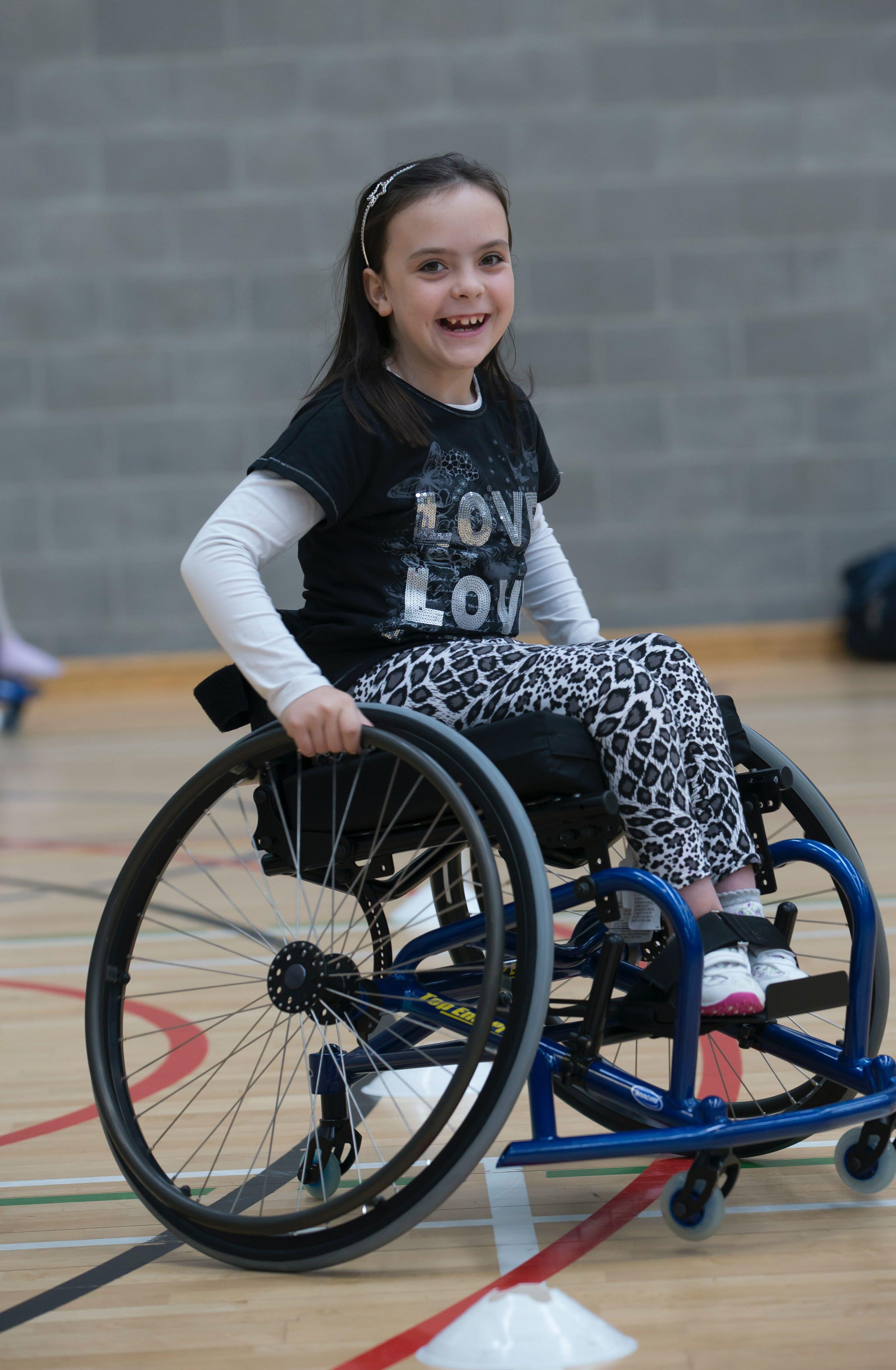
25
MidCoast Council — Community Engagement Strategy



26 MidCoast Council — Community Engagement Strategy
Mandatory public exhibition
The Local Government Act, the NSW Environmental Planning and Assessment Act, and other legislation, sets minimum requirements for consultations on a range of things including:
• Council plans, budgets and rates
• Policies
• Planning decisions
This happens through ‘public exhibition’ where we make available relevant documents such as a draft policy, plan or proposed development for community input.
What is public exhibition?
Public exhibition is the official period in which draft documents are made available to the community for feedback.
The community and key stakeholders are encouraged to provide feedback, usually in the form of a written submission.
How will I be notified?
The level of engagement may vary across projects but at a minimum we will:
• provide information on Council’s website
• make information available at customer service centres and libraries
• ensure consistency with the notification requirements in the Development Control Plan as they apply to any parcel of land.
What if I don’t agree with a document on exhibition?
Anyone can make a submission by post, email or online and clearly provide their reasons for objection. We then review all issues raised in submissions before making a decision. We consider all submissions and the issues raised seriously, regardless of the number of submissions received.
Submissions will be acknowledged, and the information contained in them may be released as part of a report to the elected Council to assist in their consideration of the matter.
Exempt and complying development
Some development, such as exempt and complying development under the State Environmental Planning Policy (Exempt and Complying Development Codes) 2008, does not allow opportunities for community engagement.
27 MidCoast Council — Community Engagement Strategy
Decision-making
When making a decision on something that has been on public exhibition, community feedback and views are reported to the elected Council along with the reasons for the decisions that are made.
• For more information on how public exhibitions for planning matters work – see Appendix
MANDATORY EXHIBITION TIMEFRAMES MINIMUM TIMEFRAME
Draft community participation plan 25 working days
Draft local strategic planning statements 25 working days
Draft development control plans 25 working days
Notice of intention of repeal of development control plan 25 working days
Draft contribution plans 25 working days
Notice of intention to repeal contribution plan 25 working days
Planning proposals for local environmental plans subject to a gateway determination
Unless otherwise directed way determination 25 working days
Planning agreements
Unless in conjunction with a development application or planning proposal gateway determination 25 working days
Reclassification of land 25 working days
Local Approvals Policy – significant changes – new uses added or significant amendment made 25 working days
Applications for development consent (other than for a complying development certificate, for designated development or State significant development)
Applications for modification of development consent (other than for a complying development certificate, for designated development or State significant development)
Generally 14 working days however for applications that require broad notification, see the appendix, the minimum timeframe will be 25 working days
Notification will be dependent on the nature of the modification, see the appendix for details
Application for development consent for designated development (including nominated integrated development) 25 working days
Environmental Impact Statement 25 working days
NON-MANDATORY EXHIBITION TIMEFRAMES MINIMUM TIMEFRAME
Council development on Council owned land 25 working days
Council policies, plans, budgets and strategies (including but not limited to Community Strategic Plan, Long Term Financial Plan, Delivery Program, Operational Plan as per Integrated Planning and Reporting framework outlined on page 6)
Key information relating to public exhibition periods
• It should be noted these timeframes are generally in excess of what legislated requirements
• Timeframes are in calendar days and do not include weekends
25 working days
• If the exhibition period is due to close on a public holiday we will extend the exhibition to finish on the first available work day after the public holiday
• The period between the end of the third week in December and the beginning of the third week in January (inclusive) is excluded from the calculation of a period of mandatory public exhibition timeframes
• We will not undertake community consultation activities, including the public exhibition of Council policies, plans and strategies, as outlined in the non-mandatory exhibition timeframes listed, from the end of the second week of December to the first working day after Australia Day
• Decisions on publicly exhibited plans and applications are not to be made until after the exhibition period
• Submissions must be made during the public exhibition period
• Council is not required to make available for inspection any part of an environmental impact statement where the publication would be contrary to the public interest because of its confidential nature or for any other reason.
28 MidCoast Council — Community Engagement Strategy
Our responsibilities
Engaging with our community is a responsibility of the whole organisation to value and identify engagement opportunities with our community.
Councillors
Community engagement provides valuable opportunities for Councillors to hear and gain a deeper understanding of the voice of the community, and ensure this voice is properly represented when council meet and make resolutions which impact the future of our community.
Engagement, Communication and Education team
Council’s engagement team is responsible for coordinating and supporting engagement activities on behalf of MidCoast Council. They also lead the ongoing engagement programs implemented within the community such as community conversation workshops, pop-up programs and other activities to support community relationship building.
They are continually looking for new opportunities to drive improvements in the way we engage with our communities and seeking out partnerships within our community to drive positive engagement outcomes.
Council staff
Council staff have a responsibility to actively consider whether engagement may be necessary for or beneficial to projects being undertaken in their area of responsibility – and that it is carried out in partnership with the Engagement, Communication and Education team and in line with the approach contained within this strategy. All departments have a responsibility and must plan for community engagement, if required, in their project timelines and budgets.
Any Council staff member taking part in an engagement activity, in any capacity, should be mindful they are responsible for providing clear and unbiased information to the community, and for applying the feedback received, as appropriate, to their area of work.
Council staff also play a key role in providing project specific expertise, as a part of engagement activities. Project experts can help community members understand more about the complexities and opportunities of the project, which contribute to the community being able to provide informed feedback.
Consultants
Consultants employed to deliver engagement activities are required to do so in accordance with this strategy and framework to ensure a consistent approach across all Council engagement activities.
Community
Our community has a very important role in supporting the principles and are encouraged to actively participate in engagement activities and contribute to decision-making processes as presented.
While Council has a strong commitment to engaging with the community, there are always opportunities for improvement. The community plays a key role in ensuring we are accountable to our commitment and where improvements can be made, this feedback is valued and will be considered in future projects.
29 MidCoast Council — Community Engagement Strategy
How we will drive improvement
To continue to improve how we engage with our community, and based on the feedback we have received, we have set six objectives to guide us. We aim to achieve these objectives through both a mix of the continuous improvement of our ongoing activities and the specific projects outlined below:
Objective 1: Communicate with the community in a way that is considered and takes into account their preferences
Implement the redesign of Council’s website with a community user focus New information architecture and design applied to website
Develop a promotional program for increasing social media followers
Develop program for the provision of information in community newsletters
Promotional plan developed and implemented to increase social media followers
Program developed to provide specific local information regularly to community newsletter publishers
Develop a promotional plan for increasing e-newsletter subscriptions
Promotional plan developed and implemented to increase e-newsletter subscriptions
Undertake a review of all current advertising activities Review undertaken with recommendations developed and implemented
Objective 2: Build community knowledge and understanding of Council’s decisions, services and facilities
Develop an education program to support the communities understanding of the planning system
Education program to support the communities understanding of the planning system developed and implemented
Develop a program to support the provision of regular updates to the community on the progress of community infrastructure projects
Communication program developed and implemented to provide regular updates to the community on the progress of community infrastructure projects
ACTION MEASUREMENT 2022-23 2023-24 2024-25
✔
✔ ✔ ✔
✔
✔
✔ ACTION MEASUREMENT 2022-23 2023-24 2024-25 Develop a general education program on the roles and responsibilities of Council General education program on the roles and responsibilities of Council developed and implemented ✔
✔
✔
30 MidCoast Council — Community Engagement Strategy
Objective 3: Strengthen and build community relationships
ACTION MEASUREMENT
Develop a program to promote services that support community connection (grant guru, my community directory etc)
Extend our knowledge of and connection to community groups across the region
Promotional program developed and implemented to promote services that support community connection
Develop a database of community group contacts
Develop a program to continually update the community group database
Develop a program to promote events and activities to our community
Promotional program developed and implemented to promote events and activities to our community
Objective 4: Support a culture of community engagement
ACTION
Encourage teams across Council to plan and budget for community engagement as part of their activities in line with the framework in our Community Engagement Strategy
MEASUREMENT
Community engagement is adequately prioritised and funded at a project level
2022-23 2023-24 2024-25
Provide staff with support and training in the IAP2 framework
Identify key staff that require training in the IAP2 framework
Deliver training program to the key staff identified
2022-23 2023-24 2024-25
Embed engagement into the planning phases of projects to ensure that community engagement is undertaken for all projects with high community impact
Community engagement embedded into the project management framework
✔
✔
✔ ✔
✔
✔ ✔ ✔
✔ ✔ ✔
✔ ✔ ✔
31 MidCoast
Strategy
✔ ✔
Council — Community Engagement
ACTION
MEASUREMENT
2022-23 2023-24 2024-25 Develop a promotional plan for the ‘have your say’ website hub
Promotional program developed and implemented for the ‘have your say’ website hub
Develop plans to build stronger relationships with our hard to reach communities Engagement plan developed and implemented to engage with hard to reach communities
Develop and implement a ‘listening post’ program across the region ‘Listening post’ program developed and implemented
Increase opportunity for participation for people with a disability in engagement activities
Engagement plan developed and implemented to increase participation for people with a disability
Engagement plan developed and implemented to increase engagement opportunities for children
Objective 5: Maximise the opportunity for the community to participate in decision-making
✔
✔
✔ ✔
✔ ✔ ✔
Establish opportunities to consult with children when developing plans, strategies and events
✔ ✔ ✔
Objective 6: Enhance understanding of how community feedback informs decision-making
✔ ✔ ✔
✔
✔ ✔ ✔ 32 MidCoast Council — Community Engagement Strategy
ACTION MEASUREMENT 2022-23 2023-24 2024-25 Ensure we close the loop with community members who have shared their feedback with us All community members that have shared feedback receive updates on projects where contact details have been provided
Provide quarterly reports to the Executive and Councillors on community engagement, involvement and participation Reports on community engagement activities produced and tabled on a quarterly basis
Report decisions of the elected Council to our community Decisions from every Council meeting reported to the community
Measurement and reporting
We will measure and report on our communication, engagement, education and promotional activities in a range of ways to allow us to continually improve how we deliver these outcomes to our community.
Closing the loop
We are committed to closing the loop on engagement and providing feedback to participants about outcomes and decisions made so participants understand how their input has affected the decision. Engagement summaries for individual projects and activities will be provided to known participants and published on our website, to provide transparency on the feedback gained and the decisions made as a result of the feedback.
Submissions from the community on planning matters receive a response and notification of either the determination or when the matter is to be considered by the elected Council. In this correspondence information is provided on how their feedback has been considered.
Improving decision-making
The feedback received from the community is used to inform the goals, priorities and strategies in key plans and decision-making by both staff and the elected Council.
Engagement outcomes reports will be provided to the elected Council to allow transparency of community feedback to assist them in making decisions that are reflective of the community’s views, or to understand the community perspective on an issue or project.
Improving our practice
We will continue to improve our practice by capturing feedback about our engagement approaches and activities and taking this feedback on board to continually improve the experience for our community.
We will also look to our community satisfaction survey for insight into the way the community perceives we are keeping them informed and involving them in decision-making.
Reporting
We will report on our performance in the following areas on a quarterly basis through reports of both quantitative and qualitative information to the elected Council on:
• Community engagement – through our digital channels and social media
• Community involvement – through our engagement activities
• Community participation – through our online engagement platform and face-toface activities
Annual action plans
The actions outlined in this document will feed into the Integrated Planning and Reporting Framework, and progress against those actions will be reported to the elected Council and the community through that framework.
Review
This strategy is required to be reviewed in the first three months after the election of a new Council, and as such is due for review by December 2024.
33 MidCoast Council — Community Engagement Strategy
Key information relating to public exhibition periods
During an exhibition period we make available relevant documents, such as draft plans or proposed developments we are seeking input on.
In reaching decisions on proposals that have been exhibited, Council balance a wide range of factors to ensure decisions are made in the public interest. This includes considering the objects of the Environmental Planning and Assessment Act, the strategic priorities of Council, community input, the land use priorities identified in strategic plans and applicable policies and guidelines.
How you can get involved in a public exhibition
There are a number of ways to get involved in our planning system. A regular and valuable way for members of the community to participate is by making a submission on a proposal during an exhibition period. You can do this by:
• Making a formal submission on an exhibition by going online to the MidCoast Council website www.midcoast.nsw.gov.au to access all the available information on the proposal or application
• Submissions can be made online or in writing to the General Manager.
Making a submission
Any person is entitled to make a submission which may object to or support a planning matter within the public exhibition or notification period, whether or not a notification letter has been forwarded to the person. Submissions must be made in writing and delivered to the Council either by email, by post, or by using the form available on our website.
All submissions received within the public exhibition or notification period will be considered in the officer’s assessment of the matter. The terms of any submissions will be summarised in the officer’s assessment report. The officer’s report will involve consideration of the merits of all relevant matters.
Important information in relation to submissions:
• All submissions must include the reasons for objection or support
• Submissions must be in writing, addressed to the General Manager, clearly indicating the names and addresses of the person(s) making the submission, quote the development application number (if relevant), the subject matter and clearly state the address of the property
• Submissions must include the postal address or e-mail of person(s) making submissions so they can be notified in advance if the matter is to be considered by Council at a Council meeting. This information will remain public and may be included in reports to Council
• Submissions are considered to be open access information and details of the submissions made to development applications may be reproduced in full in a business paper
• Anyone making a submission is advised to refrain from including personal and health information about themselves or other people, defamatory statements or abusive language.
Appendix
34 MidCoast Council — Community Engagement Strategy
Acknowledgement of submissions
All submissions received during the public exhibition or notification period will be acknowledged as soon as practicable by Council. Following determination of a development application, or the adoption of a strategic plan or strategy, all persons who made a submission shall be notified in writing of the decision regarding the application, strategy or plan.
Anonymous submissions will not be considered by Council.
Development applications
Who do we notify?
Notice of an application will be sent to those who own land adjoining and neighbouring an application site if, in the Council’s opinion, the enjoyment of the adjoining or neighbouring land may be affected by the development to which the application applies. In forming an opinion to notify adjoining owners, Council will consider potential impacts on the use and amenity of their land, including such matters as:
• impact on views
• access to sunlight, privacy
• impact of noise, odour, light
• visual impact, streetscape and local character
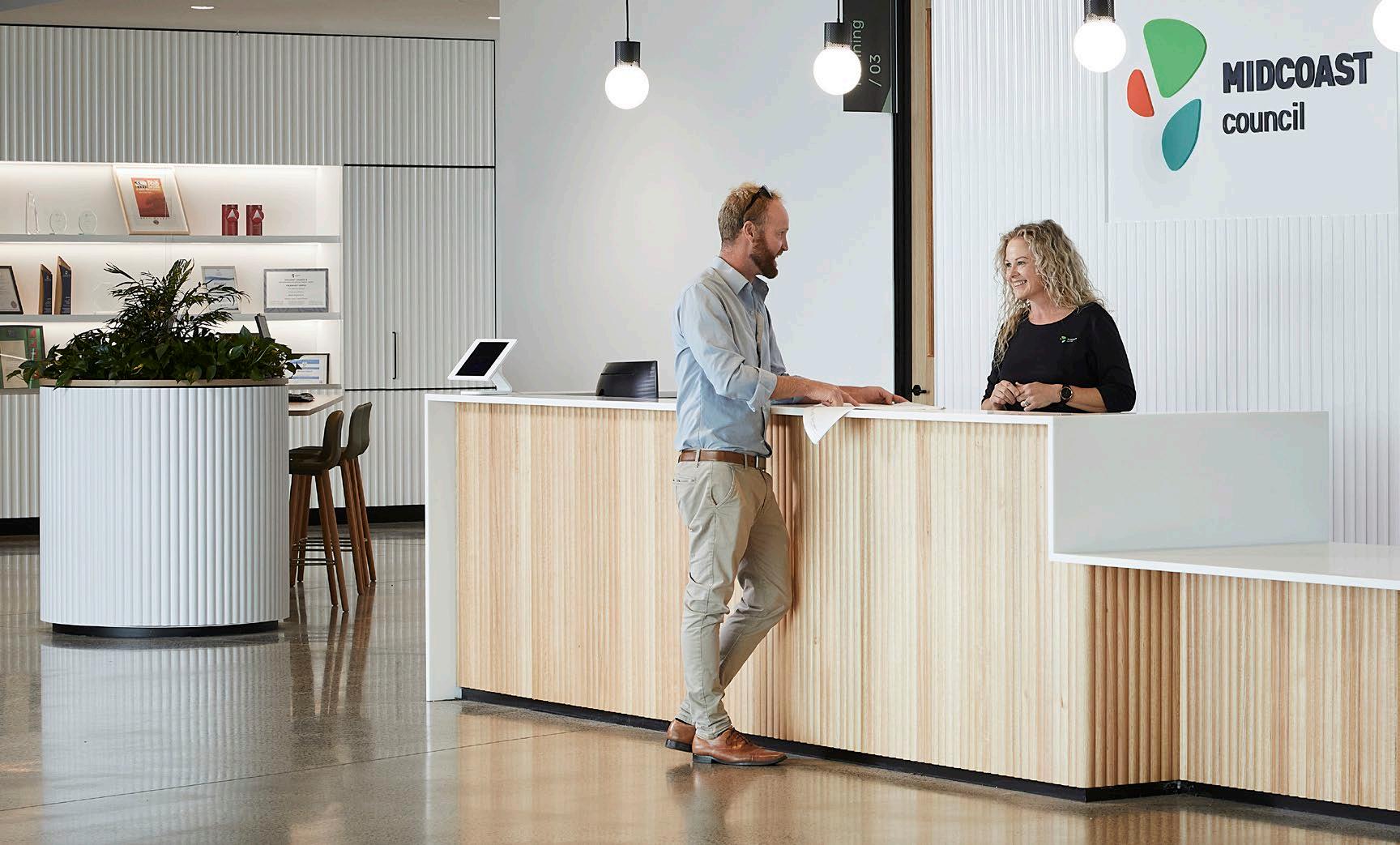
• traffic and access
• compliance with State legislation, adopted codes and policies.
Where notification is to occur, all property owners within 50 metres of the land the development is proposed on will be notified. If we determine there is likely to be a broader public interest we may notify a distance further than 50 metres. Notification will take the form of either an email or a written letter, posted to the address the landowner has registered with Council for the purpose of rating. This notification will direct the recipient to either Council’s or the Department of Planning’s website for further information and to view the development application.
35 MidCoast Council — Community Engagement Strategy
Broad notification
Council will often notify the community of development applications more broadly, in cases such as:
• major community or public facilities whether publicly or privately owned (including hospitals, libraries, schools, universities, sports and entertainment facilities)
• development on Council owned or controlled land
• major shopping and retail centres
• major transport infrastructure, interchanges and transport depots
• hotels, taverns, licensed clubs/pubs and places of public entertainment
• caravan parks, mobile home parks and manufactured home estates
• places of assembly and reception centres
• churches or similar places of worship
• neighbourhood centres
• the demolition of a heritage item
• the demolition of a building or work within a heritage conservation area
• the use of a building or land which is a heritage item
• any development application accompanied by a Species Impact Statement
• commercial water based activities
• subdivision of land into 50 or more allotments
• major tourist facilities
• residential flat buildings
• serviced apartments
• commercial stock and sale yards.
When broad notification is undertaken this will be for a period of 25 working days.
Developments that we will not notify Development applications that will not be notified include the following:
1. Works in any zone involving alterations to an existing approved building which will not result in changes to the height, elevations or façade of the existing building
2. Development, which in the opinion of Council will not detrimentally affect the amenity of persons on adjoining and neighbouring land
3. Complying development applications
4. Unless assessed as likely to detrimentally affect the amenity of persons on adjoining and neighbouring land, the following development will not be notified:
• rural agricultural land use activities (except intensive livestock agriculture) and buildings permissible within RU1, RU2, RU3 and RU4 zones
• advertising signs (except illuminated signs)
• demolition of buildings (except heritage items)
• industrial development within business and industrial zones (except where the site adjoins R1, R2, R3, R4, R5, or RU5 zoned land)
36 MidCoast Council — Community Engagement Strategy
• single storey residential development on land having a slope of not greater than 5 per cent and where the development is compliant with the relevant provisions of the relevant Local Environmental Plan and Development Control Plan
• re-cladding of roofs and walls of existing approved buildings, but only where nonreflective materials are used
• boundary adjustments
• strata subdivisions.
Amended Development Applications
Where an application is amended during assessment, the application will be re-notified in the same manner as the original development application unless Council is of the opinion that the amended, substituted or later application differs only in minor respects from the original application.
Modified Development Applications
Modifications involving minor error, mis-description or miscalculation (Section 4.55(1)): there are no advertising or notification requirements for minor modifications.
Modifications involving minimal environmental impact (Section 4.55(1A)): modifications, which in the opinion of Council will not detrimentally affect the amenity of persons on adjoining or neighbouring land, do not have to be notified.
Other modifications (Section 4.55(2)): modifications will be notified in the same manner as the original development application.
Planning proposals
The public exhibition, submissions and finalisation phase of planning proposals begins after a gateway determination has been made. Activities undertaken include:
• Undertaking consultation with relevant State/Commonwealth public authorities as stipulated under the gateway determination
• Arranging community consultation in accordance with the requirements stipulated by the Department of Planning, Infrastructure and Environment under the gateway determination. This will generally involve:
- exhibition material
- public/precinct meetings/consultation as required
- consideration of submissions
- other tasks as required
• Where significant submissions are received during community consultation, a report detailing the community feedback will be prepared and presented to Council for resolution. The applicant, land owner and any group or individual that has made a submission will be notified of the Council report and given an opportunity to speak at the meeting
• Where no significant submissions are received or where these have been addressed, Council makes a request to the Department that a Local Environmental Plan/amendment is made
• Local Environmental Plan/amendment is published
• Council notified of gazettal and notifies applicant/owners.
37 MidCoast Council — Community Engagement Strategy
Definition of planning terms
PLANNING TERM
Community participation plan
Local Environmental Plan
Development Control Plan
Local Strategic Planning Statements
Development control plans
Contribution plans
Planning proposals
Planning agreements
Reclassification of land
Local Approvals Policy – significant changes – new uses added or significant amendment made
Designated development
Environmental Impact Statement
DEFINITION
This plan sets out when and how Council will engage with their communities on planning functions and sets the minimum timeframe for participation in each type of document.
An environmental planning instrument developed by Council that sets the planning framework for the local government area.
A plan that provides detailed planning and design guidelines to support the planning controls in the Local Environmental Plan.
Local Strategic Planning Statements will set the 20-year vision for land use in the local area, the special character and values that are to be preserved and how change will be managed into the future.
A plan that provides detailed planning and design guidelines to support the planning controls in the Local Environmental Plan.
A plan that levies new development for facilities such as transport, community and recreational facilities required to service new development.
Planning proposals can be prepared to rezone land to change the uses allowed on the land, or to facilitate administrative amendments to the Local Environment Plan. A planning proposal is assessed by DPIE for strategic merit and a gateway determination by the Department allows for the proposal to proceed to public exhibition.
Planning agreements are entered into between Council and a developer to allow contributions for land dedication, recreation, community and transport facilities in lieu of development contributions under section 7.11 of the EP&A Act.
Land in council ownership must be classified for either community or operational use under the Local Government Act 1993. Community land is for land designated for community use such as community halls, libraries and recreational facilities. Operational land serves a commercial or operational function such as offices, works depots or land that is being retained for strategic reasons.
The identification of low impact activities that can be undertaken without approval from Council, such as community events, footway dining and mobile vending provided they meet certain criteria.
Designated developments are higher impact developments that are detailed in Schedule 3 of the Environmental Planning and Assessment Regulation 2000 and includes activities such as aquaculture, coalmines, chemical storage facilities, extractive industries, electricity generating stations and marinas. These developments need to be supported by an Environmental Impact Statement.
An Environmental Impact Statement is a publicly available document that provides information on a project, including its environmental impacts and mitigation measures, and is used to inform development consent decisions.
38 MidCoast Council — Community Engagement Strategy

39
MidCoast Council — Community Engagement
Strategy
midcoast.nsw.gov.au






















